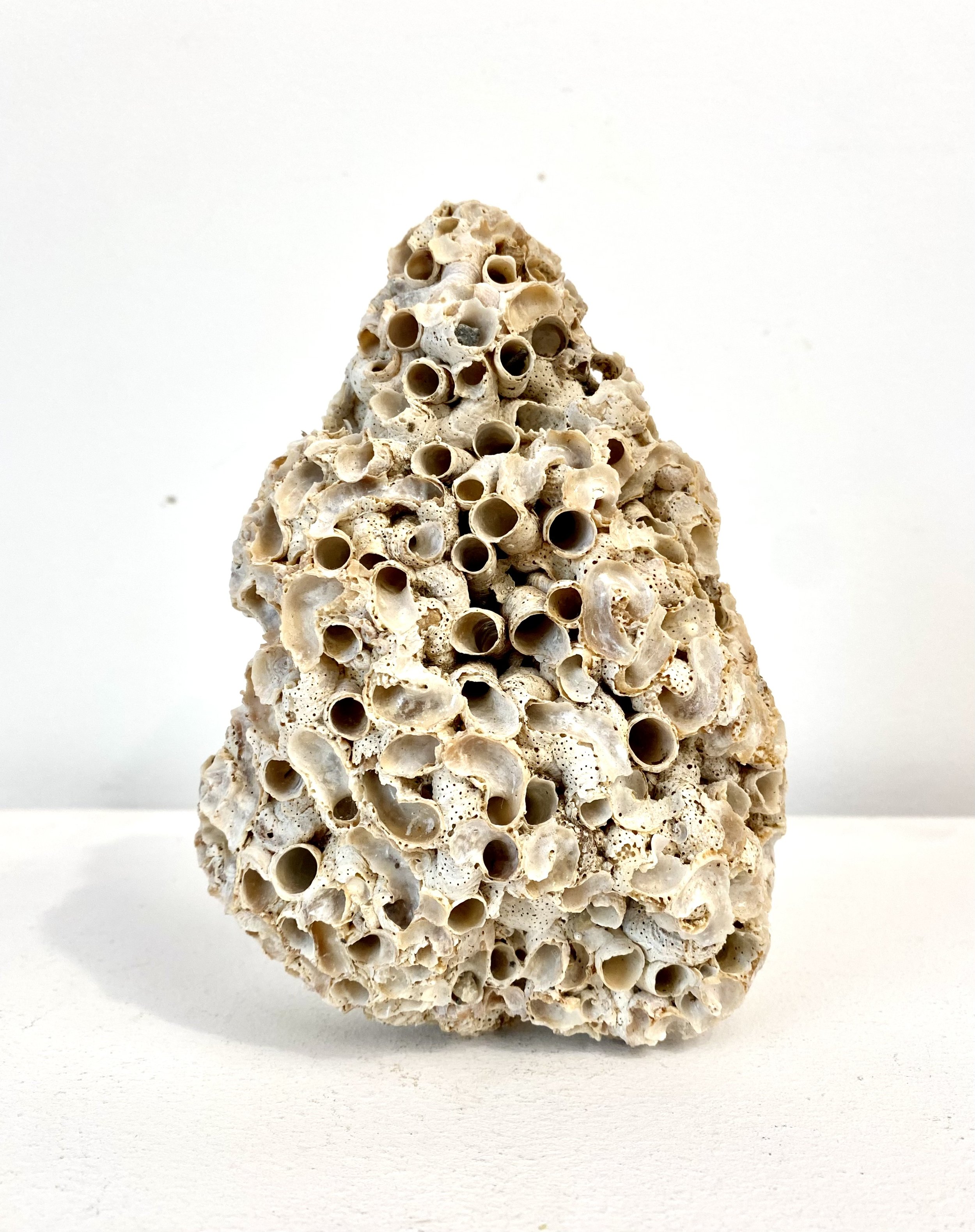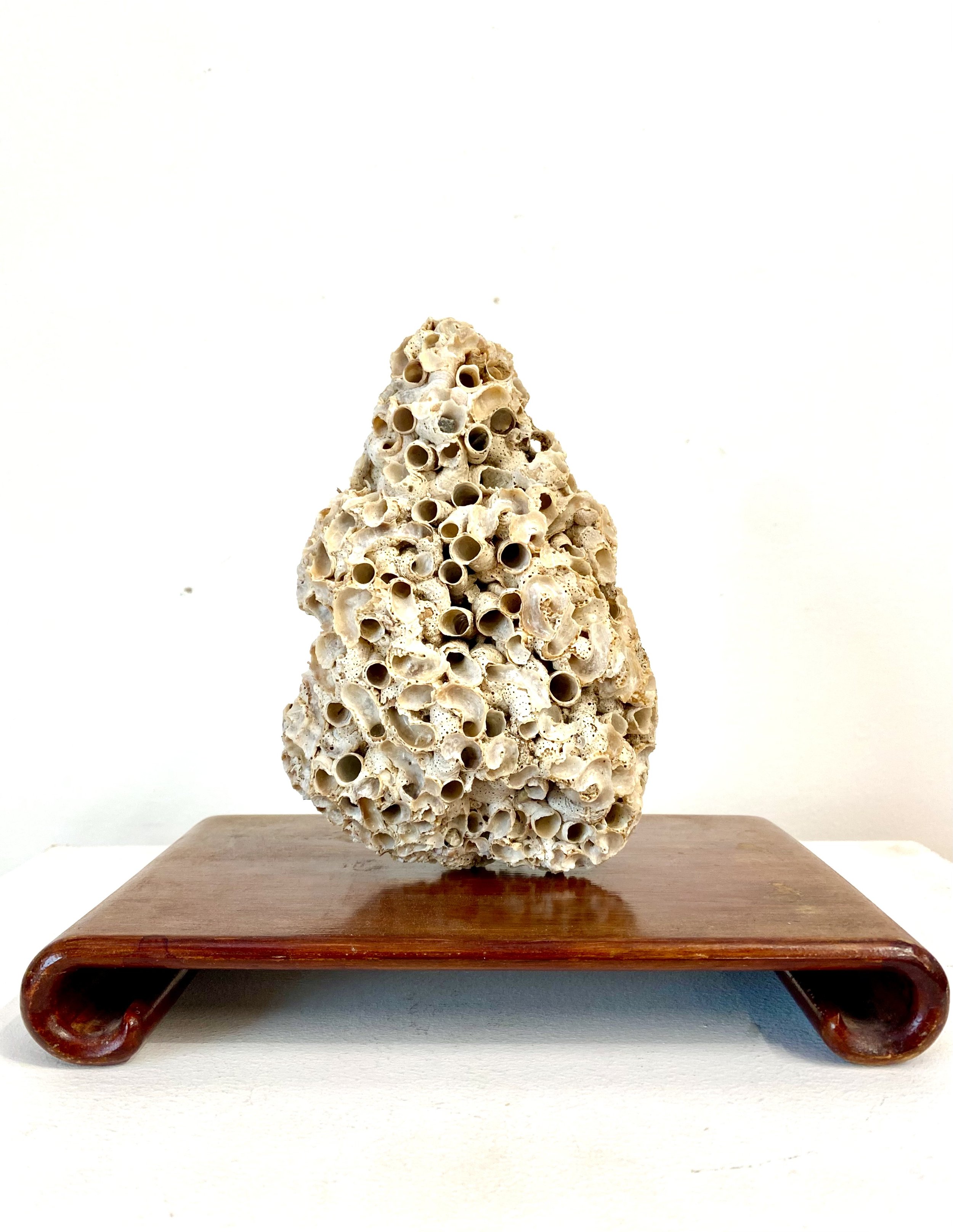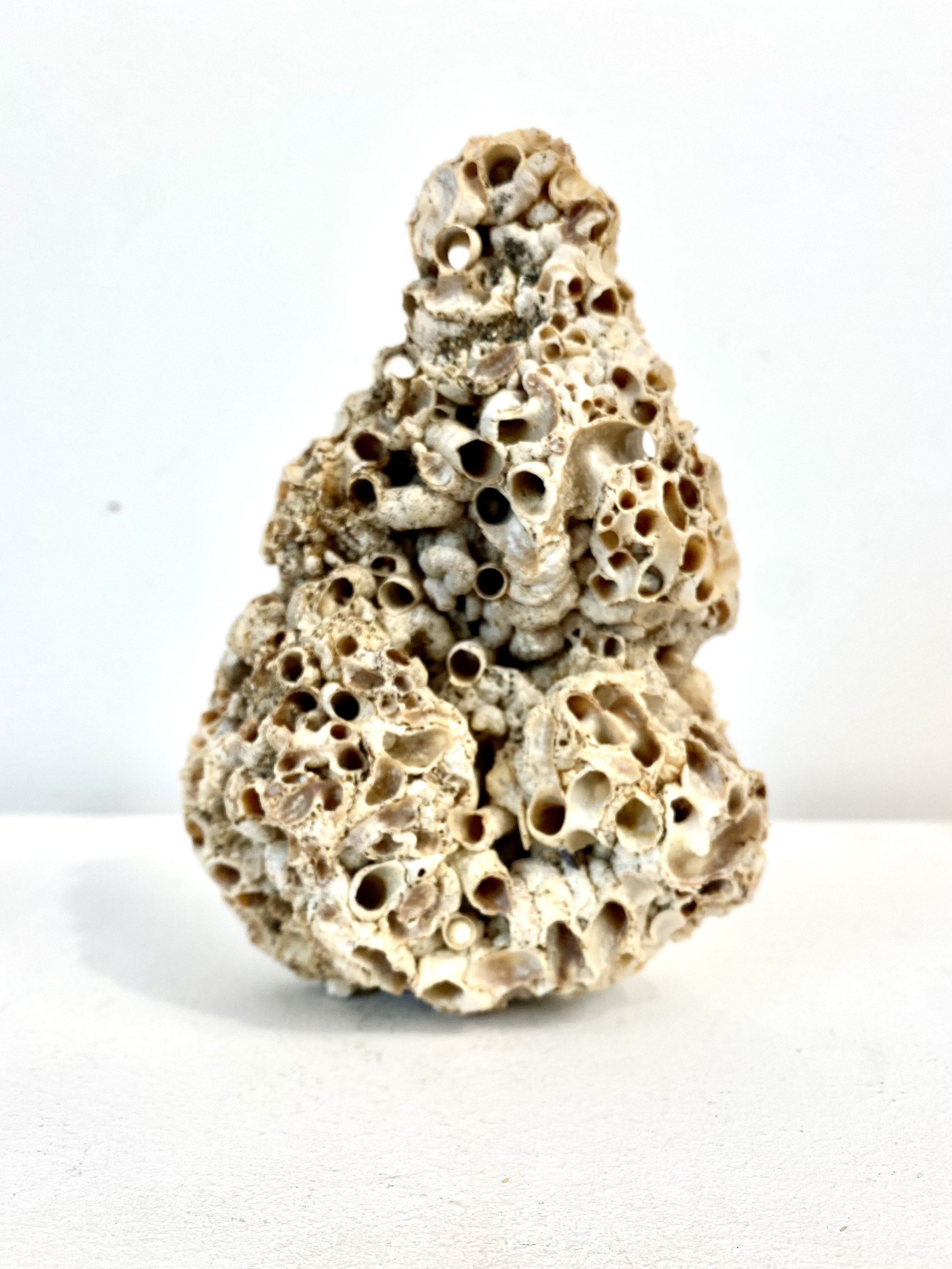 Image 1 of 4
Image 1 of 4

 Image 2 of 4
Image 2 of 4

 Image 3 of 4
Image 3 of 4

 Image 4 of 4
Image 4 of 4





Worm Snail Suiseki
What's this? You may have seen these unusual structures before, washed up on West Coast beaches. It is a fragment of a colony of marine gastropods (sea snails), in the genus Petaloconchus. Commonly called "worm snails" or "worm shells," they are part of the family Vermetidae, which also contains the dreaded shipworm. These unusual snails usually grow attached to a hard substrate, or cemented together in colonies, like some corals.
Petaloconchus colonies can also be confused with those of tube-building annelid worms of the family Serpulidae (class Polychaeta). Though the mollusks and the worms belong to completely different phyla, they have arrived, through convergent evolution, at exactly the same survival strategy. Pretty much the only way to tell the shells apart is to look inside: the mollusk shells are shiny inside, while the worm shells are dull.
All of these creatures which secrete skeletons of calcium carbonate are important biomineralizers, sequestering carbon from the water column. Unfortunately, they are all also subject to displacement and regional extinction from warming seas and increased ocean acidity, brought on by anthropogenic climate change. So turn off those lights!
What's this? You may have seen these unusual structures before, washed up on West Coast beaches. It is a fragment of a colony of marine gastropods (sea snails), in the genus Petaloconchus. Commonly called "worm snails" or "worm shells," they are part of the family Vermetidae, which also contains the dreaded shipworm. These unusual snails usually grow attached to a hard substrate, or cemented together in colonies, like some corals.
Petaloconchus colonies can also be confused with those of tube-building annelid worms of the family Serpulidae (class Polychaeta). Though the mollusks and the worms belong to completely different phyla, they have arrived, through convergent evolution, at exactly the same survival strategy. Pretty much the only way to tell the shells apart is to look inside: the mollusk shells are shiny inside, while the worm shells are dull.
All of these creatures which secrete skeletons of calcium carbonate are important biomineralizers, sequestering carbon from the water column. Unfortunately, they are all also subject to displacement and regional extinction from warming seas and increased ocean acidity, brought on by anthropogenic climate change. So turn off those lights!